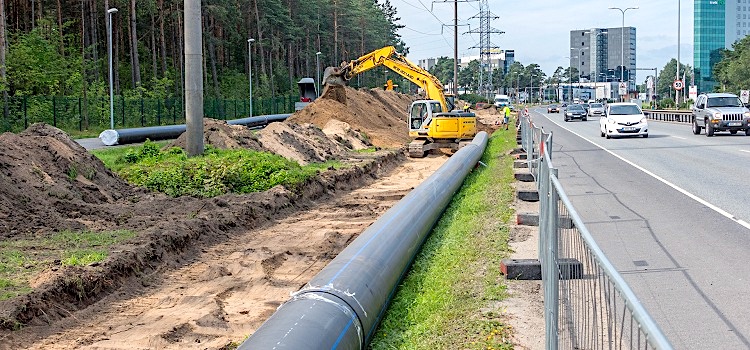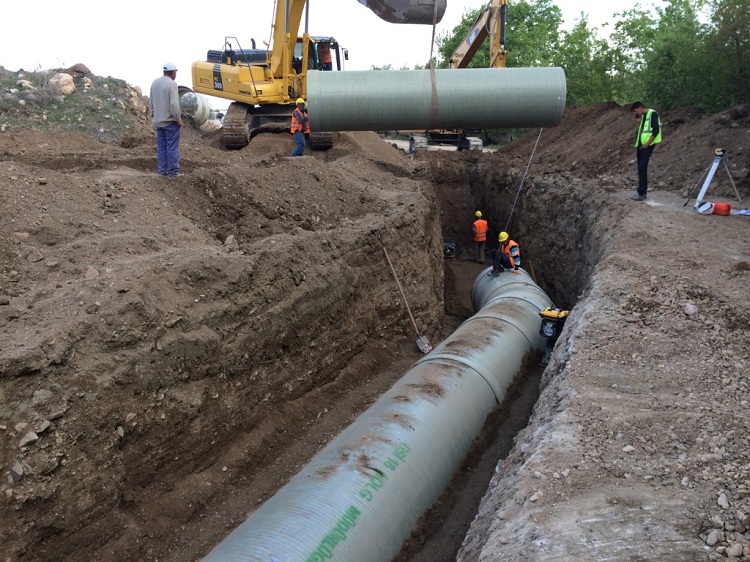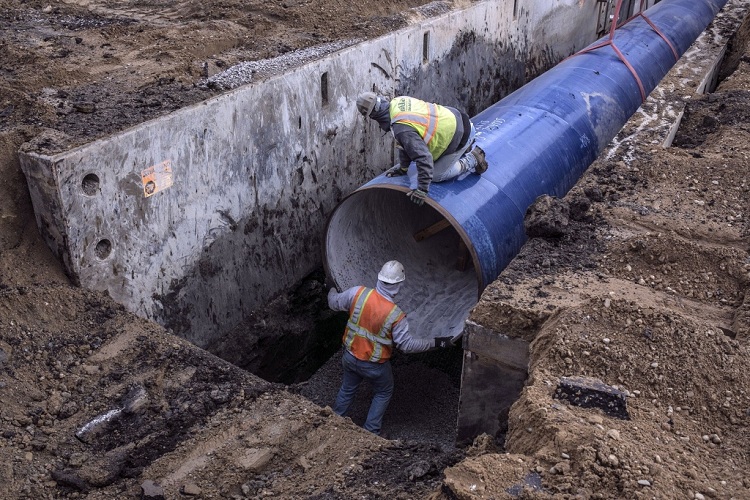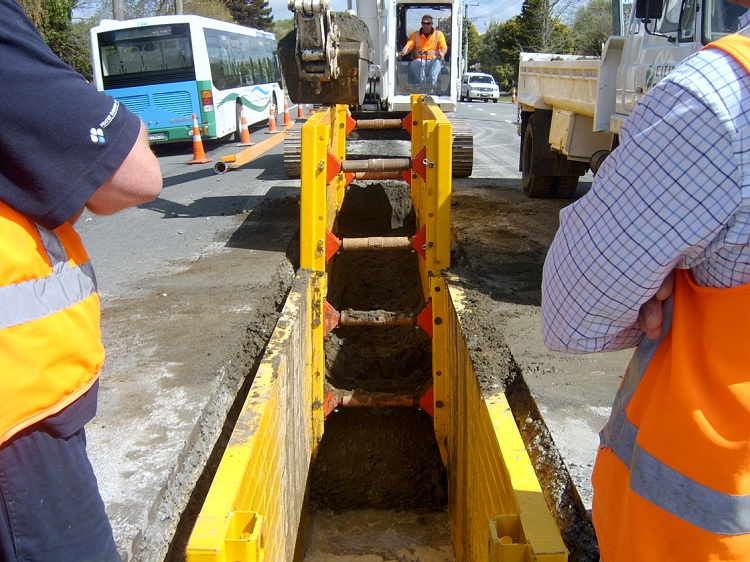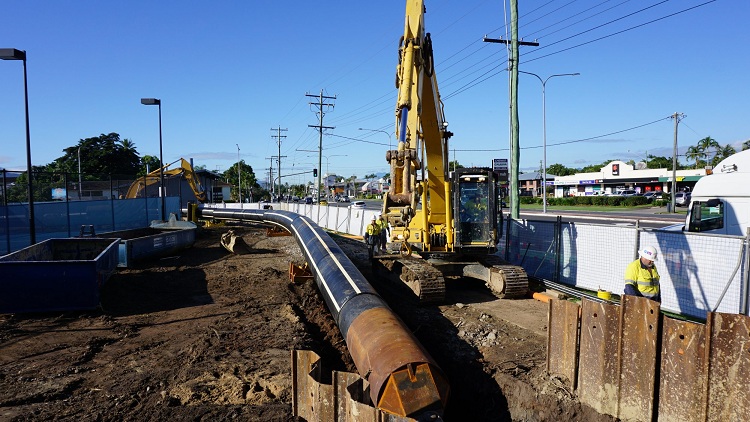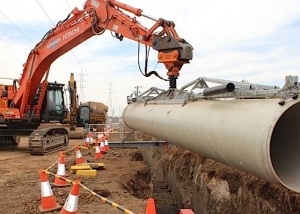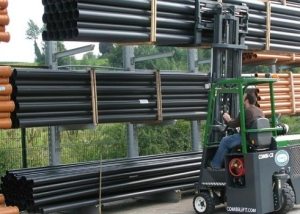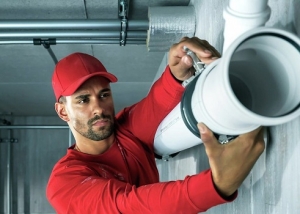Laying a water pipe in the ground is an event that in most cases is carried out with the organization of trenches (channels), however, there is also a trenchless laying of water pipes. The advantage of organizing communications underground is that it is almost impossible to damage them in this case. However, this method has many nuances that are worth paying attention to (for example, the correct calculation of the laying depth).
Content
Underground Features
Laying of water lines or sewer communications underground is made everywhere. In the modern world, most apartment buildings and private buildings are connected to the central highways. This eliminates the installation of local pumping equipment or the organization of boiler rooms.
To connect to the central water supply line, it is necessary to lay a pipe from the house to it. And immediately the question arises: how to install the water pipe? If you wish, you can mount the pipe on the surface of the earth (in an open way), however, this method entails a lot of problems.
When laying a pipe on the ground, it is mandatory to organize the supports, as well as install the required amount of heat-insulating material, which is calculated based on the material of the pipeline itself and the climatic characteristics of the region. In addition, the communication extended by this method is easier to damage. Do not forget about the aesthetic side of the issue, because the pipe crossing the courtyard looks unpresentable and can simply interfere.
All of the above difficulties of overhead installation lead to the fact that many choose the second option for laying the water supply, namely - underground. Installation of this communication is carried out in a certain order, in which the calculation of depth is important, it can in no case be ignored.
Important! As a rule, the freezing index in different regions varies from 1.2 to 1.6 m. In order to protect the future pipeline from freezing, experts recommend laying it to a depth that is 20 cm higher than the freezing index in your region.
In addition to calculating the occurrence of a water or sewer pipe in the ground, it is also necessary to take care of the organization of thermal insulation. Moreover, communications laid by both the trench and trenchless methods should be equipped with insulation.
Calculation of laying depth and pipe selection
Laying of heating and water supply pipelines, as well as sewer pipelines is carried out, as already mentioned above, to a certain depth. The pipes themselves are made of various materials that differ from each other in quality characteristics, which also affects the features of the gasket.A very important indicator for underground communications is strength. This is due to the fact that soil pressure acts on the pipeline.
It is easy to guess that the most resistant to soil loads are metal pipes. Consider what metals they are made of:
- steel (stainless and galvanized);
- cast iron;
- copper.
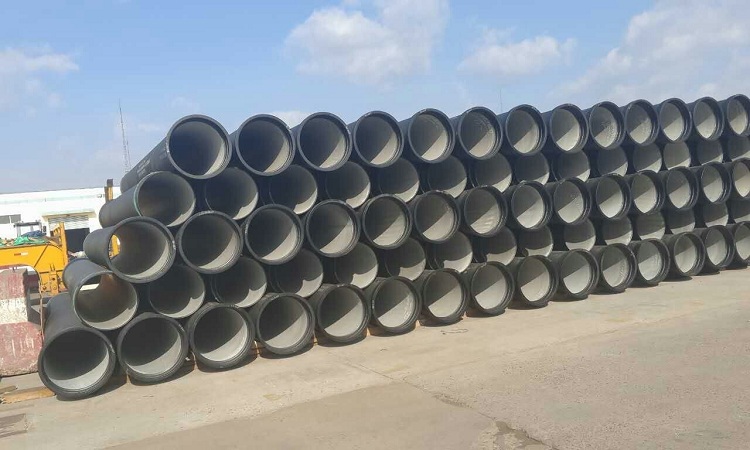
If the highway will be located at a great depth, then only metal pipes are used for its installation
However, the cost of metal products is quite high; therefore, communications from durable polymer compounds are often used. In addition, an important point is the marking, which is applied to the part during production. Marking must necessarily contain an indicator of the wall thickness of the product, which allows you to determine its strength. For example, sewer pipelines painted in orange are allowed to be laid at a depth not exceeding 3 m, and low-pressure polyethylene (HDPE) products can withstand a pressure of 1.0 MPa, which equals 10 atmospheres. Such a pipe for laying sewage can tolerate high pressure readings. Accordingly, from such pipes not only gravity sewage can be mounted, but also communications equipped with pumping equipment.
There are certain standards calculated in 1985, which indicate the dependence of the depth of the pipeline on climatic conditions. This pattern is shown in the table below.
Table 1
|
Region |
Depth of pipeline laying, m |
| Southern regions | 0,85 |
| Central regions | 1,6 |
| Severe climatic regions | 2,75 |
This classification is approximate, therefore, it is recommended to make a final calculation based on modern data for a specific region. In addition, the soil composition is also considered an important factor. The depth of the laying of water, or any other communication, also depends on the composition of the soil. Fluctuations in freezing values for different soils are approximately 60 cm.
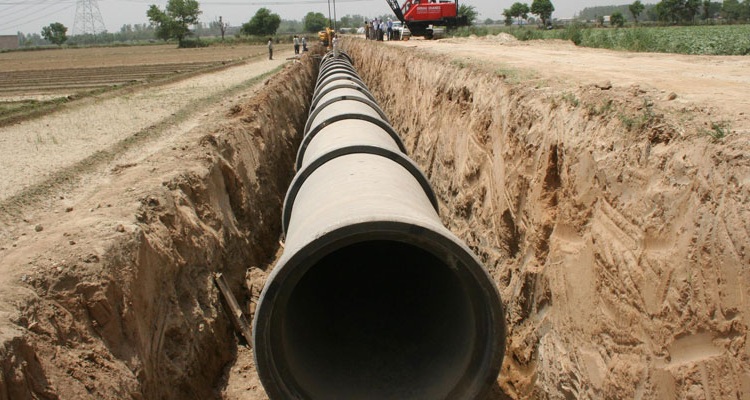
The type of pipes and the method of laying them also depends on the type of soil and the climatic characteristics of the region
Factors to consider when calculating the laying depth
A pipe in the ground, as a rule, is affected by various deleterious factors. These include:
- soil pressure;
- corrosion
- stray currents.
These destructive factors must be taken into account when choosing the material for future communication.
In addition to freezing, overheating of the pipeline structure, which can occur in the hot season, is also undesirable. Consider the main factors that directly affect the depth of a particular pipeline construction:
- temperature fluctuations in a particular region. Temperature indicators in the summer and winter periods of the year;
- soil composition;
- vegetation in a specific area where the pipeline will be laid;
Note! The calculation results of each factor must be recorded to the nearest tenth.
- temperature of the working medium that will move along the pipeline;
- the depth of water in the soil or their complete absence;
- amount of precipitation falling in a particular region where communication will be laid.
For the correct installation of the pipeline structure in the soil, it is necessary to take into account each of the above factors. Today, thanks to the development of technologies, their definition is not difficult.
Laying a water pipe underground: tips
After determining the depth of communication, it is necessary to take into account several more important points and features of such a gasket. Consider them:
- for water pipes that transport hot water, metal-plastic or reinforced pipes are most suitable. In no case is it recommended to purchase polypropylene (PP) products for such purposes;
- organization of thermal insulation is a must for both cold and hot pipes. This will maintain the correct temperature in the pipeline;
- when trenching pipes, it is advisable to use one-piece joints, since a monolithic structure in this case is the most correct solution;
- the indicator of soil coverage in the territory (which is often flooded) should not exceed 1 m;
- the main tap in the water supply communication must be mounted in such a way that it is always freely accessible;
- There are two ways to lay a water pipe underground: trench and trenchless.
To understand the issue, it is recommended to study the specifics of both methods, since they are performed in different situations and differ in their features and nuances.
Trench method of laying water systems
The trench method is the most common and has been used since ancient times for the organization of water supply lines and other business communications. The essence of this method is that you need to dig a channel (of a certain depth) and lay a pipeline in it.
Using this method allows you to easily navigate and dig trenches laid in the right directions. Such work can be done even by one person manually. However, it is recommended to use special equipment in order to reduce labor costs and increase the speed of installation of communication.
The depth of the trench, as mentioned above, is determined depending on the freezing point of the soil in a particular region. The trench width in the case of deep laying of communication, as a rule, ranges from 0.7 to 0.9 m. The width depends on the geometric dimensions of the pipeline, namely: the cross-sectional index, wall thickness.
Helpful information! On the Internet, you can easily find a table in which you will find the necessary indicator of soil freezing, characteristic of your region.
Consider the procedure for trenching water pipes:
- The preliminary stage, which takes into account all the necessary preparatory work (procurement of material, calculations of the future pipeline, etc.).
- At the second stage, it is necessary to dig a trench, which should correspond to the calculations.
- Further, it is necessary to strengthen the bottom and walls of the trench. This event is carried out by tamping the soil.
- Then it is necessary to execute a sand cushioning pad at the bottom of the trench. The thickness of the sand layer should be at least 10-15 cm.
- At the fourth stage, the pipeline is assembled in a trench.
- Next, you need to fill the sand in the trench. There is one important rule here: pipes are filled with sand to a level that exceeds the highest point of communication by 5 cm.
- After this, it is necessary to lay a layer of tile or brick on the sand.
- Further, a very important point is the pulling of the red warning tape. It is necessary so that in the case of earthworks in this place, it can be determined from the tape that there is water supply communication.
- We fill the canal with soil and ram it.
Thus, the trench laying of water and other pipes is performed. Following the above rules, you can perform high-quality laying of the pipeline with your own hands.
Trenchless way of laying water systems
This method of organizing water supply in the earth, as well as sewage, appeared not so long ago, but has already managed to gain popularity. This is due to the fact that this method has several advantages over the trench method. Consider these benefits:
- low consumption of materials;
- minimal damage to the environment, since there is no need to dig a canal;
- reduction of cash expenses (up to 30%);
- several times increase in speed of work;
- minimum labor costs.
For trenchless installation of pipelines, special drilling rigs are used. There are two types of trenchless laying of pipeline communication:
- Remediation.
- Puncture method.
Remediation is a process that involves replacing an old pipe with a new one, or repairing it. In turn, the puncture method takes into account the introduction of a new pipeline into the ground. Let's consider the method of puncture in stages:
- First, a puncture is made in the soil.
- Further, the obtained channel is fixed by means of a metal shell.
- At the third stage, the pipeline extends directly into the metal channel. And the distance between the two pipes is closed by means of a heat-insulating material.
This method is also called laying in a case or in a casing. The organization of a protective casing allows to significantly extend the operational period of the received communication, which is an undoubted advantage.
